My role as a founder CTO: Year Six
Read time: 13 minutes.
Another year as a founder CTO, and let me tell you, it’s been one for the books. I can’t remember a time in my life that was more demanding and emotionally draining. Those early years were filled with hard work, but we were also full of energy, ambition to build, and the sense that we had absolutely nothing to lose. As my dear friend Jacob used to quip, “Worst case scenario nobody dies”. Yet, everything takes on a new perspective when you’re responsible for the monetization infrastructure of over 30,000 apps and ensuring the livelihoods of not only your team but also your own family.
While I would typically begin this series of posts with an array of metrics, this year has been a whirlwind of events that has taken precedence over mere numbers. So, dear friend, take a seat and allow me to share with you a deeply personal and epic firefighting tale and the battle to restore the flame of RevenueCat’s core values.
The Year of Shipping
We embarked on Q1 with big intentions and an ambitious roadmap. With seven new engineering teams, my role was to lead the one responsible for serving our larger customers. My days consisted of collaborating with our (still tiny) sales team, while simultaneously overseeing our support function. While I continued to provide technical guidance to several projects, I made the conscious decision to delegate the bulk of product development to the other teams. In hindsight, this decision proved to be a mistake. The teams were still finding their footing, with a mix of new hires, and there was a disconnect between engineering and product that needed addressing — a topic we’ll get into later.
Nevertheless, the team I led was firing on all cylinders, delivering enterprise-level features at a hasty pace. From implementing single-sign-on in a matter of days, to tackling gnarly bugs, this team’s momentum was inspiring. I hoped that this stride would serve as a catalyst, motivating the rest of the teams to achieve a similar velocity.
On the home front, my wife’s parental leave came to an end in January, marking the start of a new era where my hours were no longer flexible. Together, we embarked on the demanding task of caring for our twin babies. Little did I know how much the lack of sleep would impact me. Fatigue began to set in and my usual escape valves, such as surfing, turned into distant memories. Caffeine became my closest friend, helping me stay awake as I navigated the demands of work and family. I would spend my entire weekends lying in bed, trying to recover. I wrongly assumed it would be a short phase.
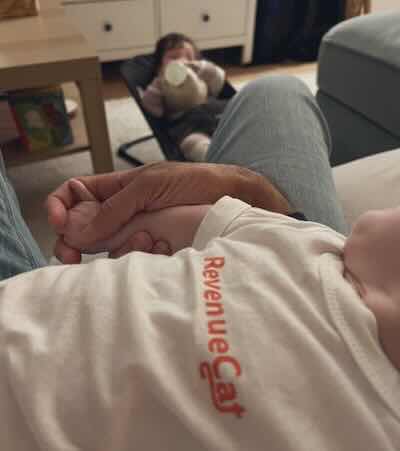
Troubles never come alone
On the fateful morning of March 9th, while I was soothing one of our crying babies at 4:30 AM, my WhatsApp began buzzing with messages from concerned fellow founders. Rumors were swirling that Silicon Valley Bank, the custodian of most VC-backed startup funds, was about to collapse. Within hours these whispers escalated into a full-blown bank run and we found ourselves unable to access our funds. Without going into the nitty-gritty details, it was an intensely stressful weekend. We were on the verge of a payroll crisis and we didn’t even have a functioning bank to transact with. However, we couldn’t afford to let this situation be what killed RevenueCat. We worked to expedite the opening of new bank accounts and explored multiple liquidity alternatives. Fortunately, we were privileged enough to entertain multiple options. One investor came to help, wiring funds from their personal account, and some of our loyal customers offered to pay in advance. Just as hope seemed to dwindle, the FDIC announced that they would guarantee all deposits on that Sunday afternoon. Crisis averted.
Emotionally drained from the weekend’s trauma, we received another unexpected blow just a few days later: Y Combinator was discontinuing its Continuity Fund. This created a dilemma regarding the fate of their board seat, something we would have never anticipated. Just weeks prior, we had suffered a severe outage caused by our cloud provider. We tried to console ourselves, thinking, “At least all these problems are internal; we’re not dealing with downtime”.
A Crisis of Reliability
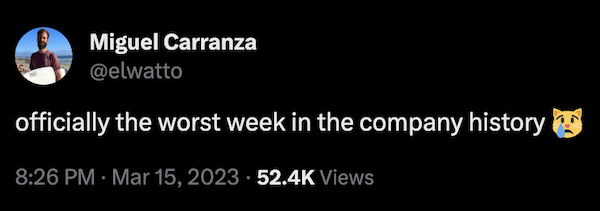
Our break was short-lived. Less than a week after the Silicon Valley Bank fiasco we experienced yet another major outage, and this time, it was self-inflicted. When you’re handling hundreds of thousands of API requests per second, even a few seconds of downtime can set off a cascade of alarms and potential sales losses. Our customers were understandably frustrated, and they didn’t hesitate to make their displeasure known through every available channel. It was heartbreaking to witness and I felt a deep sense of personal failure. This marked the third user-facing issue in a matter of months. It wasn’t something to sweep under the rug: our reputation was on the line and it was time to act.
By this point, I was utterly sleep-deprived and my Apple Watch had begun sending me concerning health notifications. The day after we resolved the outage, my co-founder Jacob and I came up with an action plan. It was officially wartime. We needed to act decisively. We publicly unveiled our plan: to develop a robust fallback system independent of our current infrastructure. And we promised to deliver it within a week. Simultaneously, Jacob and I embarked on an apology tour, reaching out personally to some of our most worried customers. This was a painful but humbling experience for us, but it proved beneficial on multiple fronts. It allowed us to reiterate our commitment to becoming the best in-app subscription infrastructure provider in the world while gaining invaluable insights into our customers’ pain points.
RC Fortress
I rallied a small crew of engineers from different teams to build the first version of what we called “RevenueCat Fortress”. This component was designed to make sure end-customers could purchase seamlessly, even when our main servers were unavailable. It was a crazy week because we set ourselves a tight deadline but it helped boost our spirits and proved we could deliver software fast.
The initial version of RevenueCat Fortress was quite simple – it operated behind the scenes on the server. But we didn’t stop there. We made it even better in the next iterations by adding SDK improvements such as offline entitlements.
When it finally rolled out, it did so with flying colors. We even got to put it to the test during a major Apple outage and it saved the day for RevenueCat customers, making them immune to Apple’s downtime.
Turning things around
Looking back, the birth of RC Fortress marked the start of a shift in our culture. It got us back to the basics of reliability, fast delivery, and customer obsession. We couldn’t afford to spend months on extensive, untested projects. We had to rapidly build the features our customers valued most and iterate from there. We also realized that keeping things rock-solid wasn’t just the infrastructure team’s job; it was a global effort.
Around the same time, we faced a couple of setbacks when we parted ways with two executives – the VP of People and the VP of Engineering. We tried to find a new VP of Engineering but couldn’t find a match that really excited us. So, the board agreed it would be best if I took the reins of the entire engineering organization again.
Those days gave me a chance to get closer to the product teams again. Here’s where I spent most of my energy:
- Performance: I clarified expectations, provided feedback, and coached managers on performance management.
- Hiring: We tweaked our hiring process and re-calibrated interviewers’ expectations.
- Reliability and Quality: We were pretty good at doing post-mortems after issues but we had too many of them. They lacked detail and they weren’t followed through with action items. We needed a little bit of a cultural reset. We introduced dedicated incident Slack channels and clearly defined roles.
- Customer Obsession: Taking over the support team was eye-opening. It gave me a direct line to our product’s weak spots and what confused our customers. We started categorizing support tickets and sending them straight to the right product teams for triaging.
- Project Management: We focused on breaking projects into smaller chunks to deliver faster, instead of getting lost in never-ending projects.
- Education and Best Practices: I spent time educating other departments, especially post-sales teams, to avoid recurring mistakes that were slowing down our engineering progress.
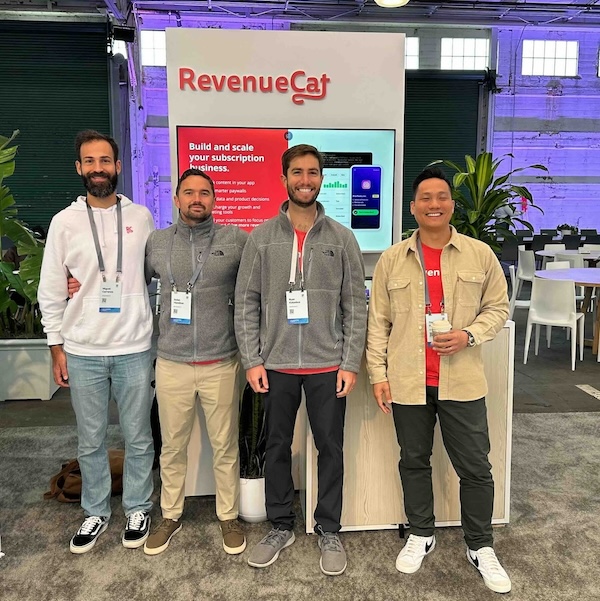
On top of all that, I reconnected with our customers more than ever. I hopped on planes to visit them at their offices and even worked our booth at a few conferences. It was a refreshing change to chat with users face-to-face, and hearing their unique challenges in person after a long time.
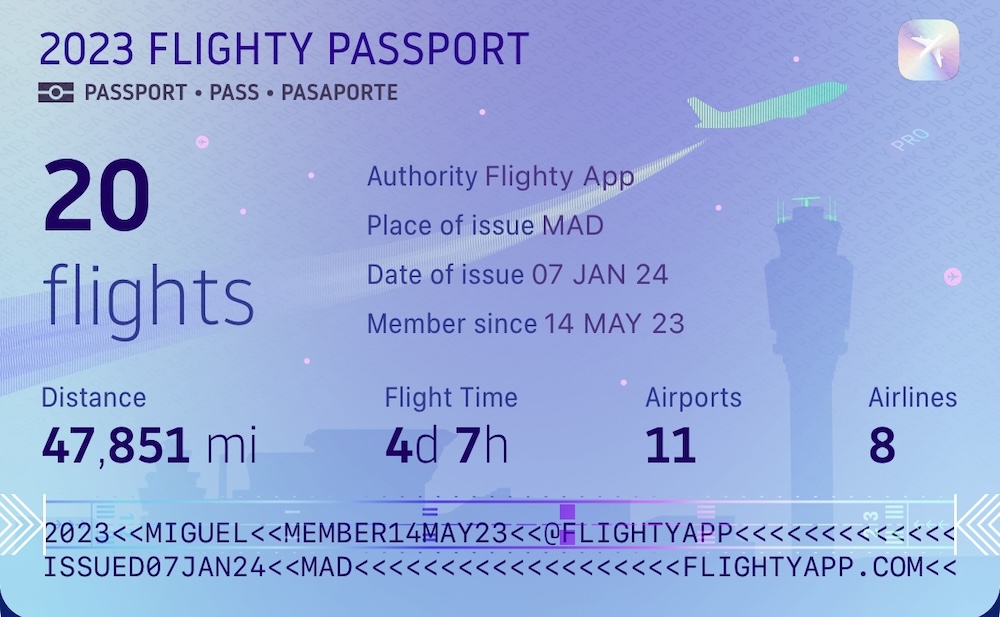
Life is what happens when you’re busy running your startup
We were fortunate enough to fly in my mother-in-law to assist with our babies, which made my travel plans possible. I finally felt more rested and even managed to squeeze in a few surfing sessions. Things were looking up both personally and professionally. I was eagerly anticipating our annual company-wide offsite, especially since I had missed most of the previous one due to my wife’s high-risk pregnancy. This time around I was geared up to address the entire engineering team, sharing the exciting changes and boosting morale. We were about to start winning again.
But then, the day before my flight, I received a call from my father back in Spain. My mother had been rushed to the hospital, and she had been diagnosed with an extremely aggressive form of leukemia. Time seemed to stand still.
I boarded the flight as planned, chugged two Red Bulls, and delivered that motivational talk to the whole team, while my mom was in a hospital bed thousands of miles away. This was hands down the toughest thing I’ve ever done as a startup founder.
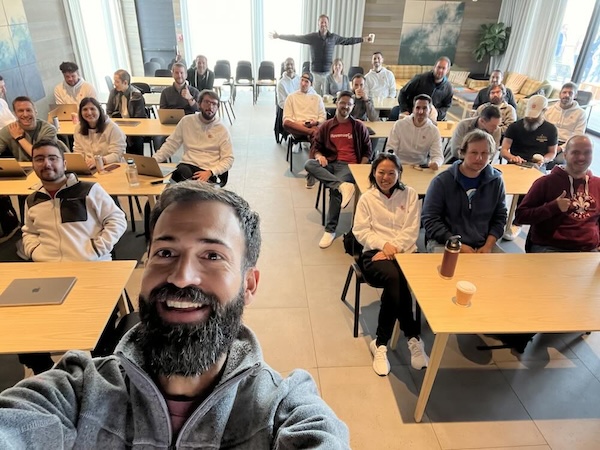
I left the offsite early and headed back to my hometown. Over the following weeks, I traveled back and forth around the globe, coordinating with my family. Sadly, my mother never left the hospital, she passed away merely a few weeks after the diagnosis. These are the things that always lurk in the back of your mind when you’re living 10,000 miles away from home, but you never truly believe they’ll happen. Until they do, and they shatter you.
Keep on pushing
The days that followed were far from easy. We were dealing with the launch of our biggest customer’s app, something we’d been preparing for a long time. The scale was enormous and the hard work of our team truly paid off. Our systems ran incredibly smoothly. It was a monumental victory, especially after the rocky start to the year. But, mentally, I wasn’t prepared to savor the moment.
Yet, the energy post-offsite was infectious. People genuinely enjoyed meeting each other in real life and were fired up to start shipping. We couldn’t let this opportunity slip through our fingers. I paid homage to my mom’s teachings by continuing to press forward.
RC Paywalls
One of the major product ideas that had always been on our team’s wishlist was paywalls. We hadn’t tackled it because it seemed daunting and we lacked a product team with all the necessary skills. We couldn’t even estimate how long it would take to build. But, fueled by the success of RC Fortress, we decided to take a shot at it. We assembled a small team with members borrowed from different corners of the company. We didn’t mess with any reporting structures but appointed a leader. We went back to our roots, working in a hackathon-style frenzy for a couple of weeks to build a prototype. Just like in the good old days. And, boy, did the team rise to the occasion. We gave them some extra time and, in the end, they delivered one of our biggest product wins of the year.
Shipping paywalls felt like a breath of fresh air and a clear sign that we still had our mojo. We were still capable of shipping software at lightning speed and keeping our customers excited. Based on all these lessons, the Head of Product and I started cooking up a brand new way of building products at RevenueCat.
Engineering/Product/Design changes
The complete process overhaul would warrant a couple of blog posts, but let me highlight the key changes to our workflow:
- We’ve reviewed all existing teams to determine whether they should continue as is, be replaced, or undergo changes in their mission or structure.
- We’ve rebalanced and clarified the responsibilities across Product, Engineering, and Design:
- Engineering takes the lead on feasibility, delivery, and developer experience, managing Linear, and overseeing technical architecture (and debt) roadmaps.
- Product is dedicated to customer value, business viability, and collaboration with sales and marketing teams. They also provide support to engineering in refining project scopes.
- Design is responsible for usability.
- We’ve formalized the role of Tech Lead, assigning them as the Directly Responsible Individuals for specific projects. They’re accountable for project success, with full backing from their Engineering Manager. It’s optional and project-dependent and doesn’t entail a title or salary change.
- We’ve acknowledged the need for engineering-driven initiatives, where PM and Design are involved on an as-needed basis.
- For projects with dependencies with other teams, we’ll designate a team member from the collaborating team as a formal interface.
- Our existing setup of stable product teams will remain the norm for most of our work. Temporary project teams will be established only when there’s a strong need for cross-team collaboration over a limited period.
- We’ll conduct monthly roadmap and shipping reviews with the founders and Head of Product. These reviews will provide insights into what we’re building, offer feedback opportunities, and help identify cross-functional dependencies and misalignments.
2024: The year of shipping + selling
Collaborating with the Product team showcased the immense benefits of working closely together. Traditionally, Product reported directly to our CEO, which introduced unnecessary layers of indirection. In light of this and our recent addition of a VP of Sales, we decided it was time for a reorganization.
Currently, Jacob (co-founder, and CEO), is overseeing Go to Market, People, and Operations, while I’m responsible for Engineering, Product, and Customer Engineering. We’ve brought in a VP of Customer Engineering, who reports to me and is in charge of Support and Technical Account Management. With our current headcount at 73 employees, my organization consists of 48 team members.
Our executive team developed the most comprehensive planning effort to date. Our goal is to accelerate growth, focusing on sales and product delivery. We will avoid distractions by being extremely strategic at hiring. The past quarter showcased the strength of our engineering and product teams. New team members have been onboarded successfully, contributing meaningfully, and our management structure is finally robust. It took a bit of time for the “year of shipping” to fully materialize, nearly a year later, but customers have taken notice and we’re capitalizing on this momentum.
On the enterprise sales front, I’m extremely bullish. We’ve secured the biggest deals in the company’s history. RevenueCat has evolved beyond being a product just for indie developers. However, we acknowledge the need to continue closing the product-market fit gap for enterprise clients. We’ve gained valuable insights into enterprise needs, and we’ll keep developing new products and features tailored to them. Indie developers will also take advantage of them to make more money. In 2024, the collaboration between our go-to-market and engineering teams will be critical.
Highlights
This year, as you’ve probably noticed, was a tough one. However, besides the challenges, there were several remarkable achievements to celebrate:
- We truly shipped.
- Our second hackathon, spanning an entire week, was an epic success. Many of the projects launched immediately, directly benefiting our customers.
- We had the privilege of collaborating with prominent brands and companies, including none other than Arnold Schwarzenegger himself.
- We created an astonishing amount of high-quality content. Our SubClub podcast outperformed all my expectations.
- During the chaos of the bank run, we discovered that one of our idols was not only a RevenueCat customer but also a devoted fan.
- We experimented with fresh team topologies and processes, and they turned out to be successful.
- We fine-tuned our vision for building a winning team, offering improved feedback, clearer expectations, and timely performance management.
- Jacob and I are no longer the sole authorities on Apple and Google subscriptions within the company.
- We successfully recruited seasoned executives to join our team.
- Our core infrastructure team accomplished monumental feats. We now support over 1 billion API requests daily, transitioned to our own data platform, and developed our own memcached client. All while maintaining flat costs despite the increase in load.
Learnings
- It’s impossible to achieve peak performance without attention to health, exercise, and sleep. I’m no longer in my twenties.
- Complexity is the root of all evil. Startups and software are inherently complex, so avoid introducing unnecessary complexity. Begin by building the simplest feature or process, debug it, and then iterate as needed.
- Starting a business is tough, but launching a remote startup is an even greater challenge. Scaling a remote startup while parenting two under two is a herculean effort.
- Building a brand takes years but its reputation can be destroyed in an instant. Protect the integrity of your brand at all costs.
- Every new team member should add value, and especially so in a startup. Some provide immense leverage, while others become bottlenecks. The trickiest are those in the middle, who often end up becoming bottlenecks. Founders usually spot this within the first few weeks.
- Letting someone go is a taxing task. Even when managers believe it’s the right thing to do, it often requires a significant amount of support and guidance.
- Transparency in times of crisis pays dividends. Employees want to be treated like adults, and it builds trust. The same applies externally.
- Early worries often become baseless. By the time they become actual problems, your company might have died, you might have gained experience, or you might have hired the right talent to tackle them.
- SOC 2 auditors may request unconventional supporting evidence, such as employee performance reviews.
- Developers love socks.
- I’m so fortunate to have the world’s best co-founder.
- At this stage, my role is much more aligned with that of a founder than a traditional CTO or VP of Engineering. I continue to address issues as if they were technical problems, but my responsibilities extend well beyond the technology area.
- Life keeps moving forward, with its share of highs and lows. Life is too short, so you have to ensure the journey remains fun. For me, that means working with people who inspire me, and serving customers I genuinely care about.
I really hope you enjoyed reading this post. I’m aware it’s a lot longer than my previous ones, but there were so many stories to share. As always, my intention was to share it with complete honesty and transparency, avoiding the hype that often surrounds startups.
If you are facing similar challenges and want to connect and share experiences, please do not hesitate to reach out on Twitter or shoot me an email!
Special thanks to my co-founder Jacob, the whole RevenueCat team, and our valuable customers. I also need to express my eternal gratitude to all the CTOs and leaders who have been kind enough to share their experiences over these years. Shoutout to Dani Lopez, Peter Silberman, Alex Plugaru, Kwindla Hultman Kramer, João Batalha, Karri Saarinen, Miguel Martinez Triviño, Sam Lown, Javi Santana, Pau Ramón, Javier Maestro, Matias Woloski, Tobias Balling, Jason Warner, and Will Larson. Our investors and early believers Jason Lemkin, Anu Hariharan, Mark Fiorentino, Mark Goldberg, Andrew Maguire, Gustaf Alströmer, and Nico Wittenborn.
I want to convey my deep gratitude to my amazing wife, Marina, who has been my unwavering source of inspiration and support from the very beginning, and for blessing us with our two precious daughters. I cannot close this post without thanking my mom, who made countless sacrifices to mold me into the person I am today. I promise you will look down on us with pride the day we ring the bell in New York. I love you dearly.
Subscribe via RSS